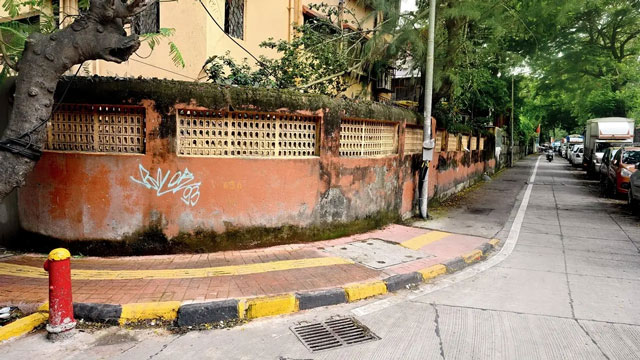Daijiworld Media Network – Mumbai
Mumbai, Aug 16: Navigating Mumbai’s streets has become a daily challenge for pedestrians, especially in congested areas like Dadar and Andheri, where narrow lanes, encroachers, and an increasing number of vehicles make walking hazardous.
R Kannan, a resident of Dadar (E), said she has become accustomed to “constant manoeuvring amidst crowds and cars” on Naigaon Cross Road. However, the city continues to witness alarming pedestrian accidents. The recent death of a 75-year-old woman trapped between a BEST bus and a parked car on Malabar Hill has brought renewed focus to pedestrian safety. The stretch opposite Sahyadri State Guest House has a narrow sidewalk on one side and illegally parked cars on the other, forcing walkers onto the main road.

According to the Mumbai Road Safety Annual Report 2023, motorcycles were involved in 41% of pedestrian accidents and cars in 29%. Fatalities involved cars (25%), two-wheelers (21%), and heavy vehicles (19%). Filmmaker and activist Ashok Pandit said, “Footpaths have been taken over by hawkers, slums, dhabas, and now even builders.”
Areas like J.P Road in Andheri (W) illustrate the problem, with sidewalks cluttered by hawkers and vehicles, forcing pedestrians to navigate what some describe as an obstacle course. Dhaval Shah, director of the Andheri Lokhandwala Oshiwara Citizen’s Association, noted that parts of S.V. Road remain difficult to traverse, putting walkers at constant risk.
Residential buildings have also converted footpaths into vehicle ramps. Following complaints in Juhu, BMC’s K-West Ward issued notices to 19 buildings to rectify ramps that obstruct pedestrian movement, especially for senior citizens.
BMC’s additional municipal commissioner, Abhijit Bangar, said sidewalks near building gates will now comply with walkability standards set by the Indian Road Congress, with footpaths tapered to grade level for easier access. The city has allocated Rs 100 crore in the 2025-26 budget for footpath development, with extensions planned based on road width assessments.
Activist Rishi Aggarwal, founder of The Walking Project, emphasised that smart solutions, not just funding, are key to preventing pedestrian accidents. “Car parking should be disallowed, and a flexible mechanism like a six-inch curbstone or one-meter footpath should be implemented,” he said. Aggarwal added that the budget for the Universal Footpath Policy must integrate with other road development projects for a holistic approach.
The BMC has engaged with activists over the past two months, hosting initiatives like the Walkable Cities Conclave in April, where municipal commissioner Bhushan Gagrani acknowledged that more needs to be done to make Mumbai pedestrian-friendly.